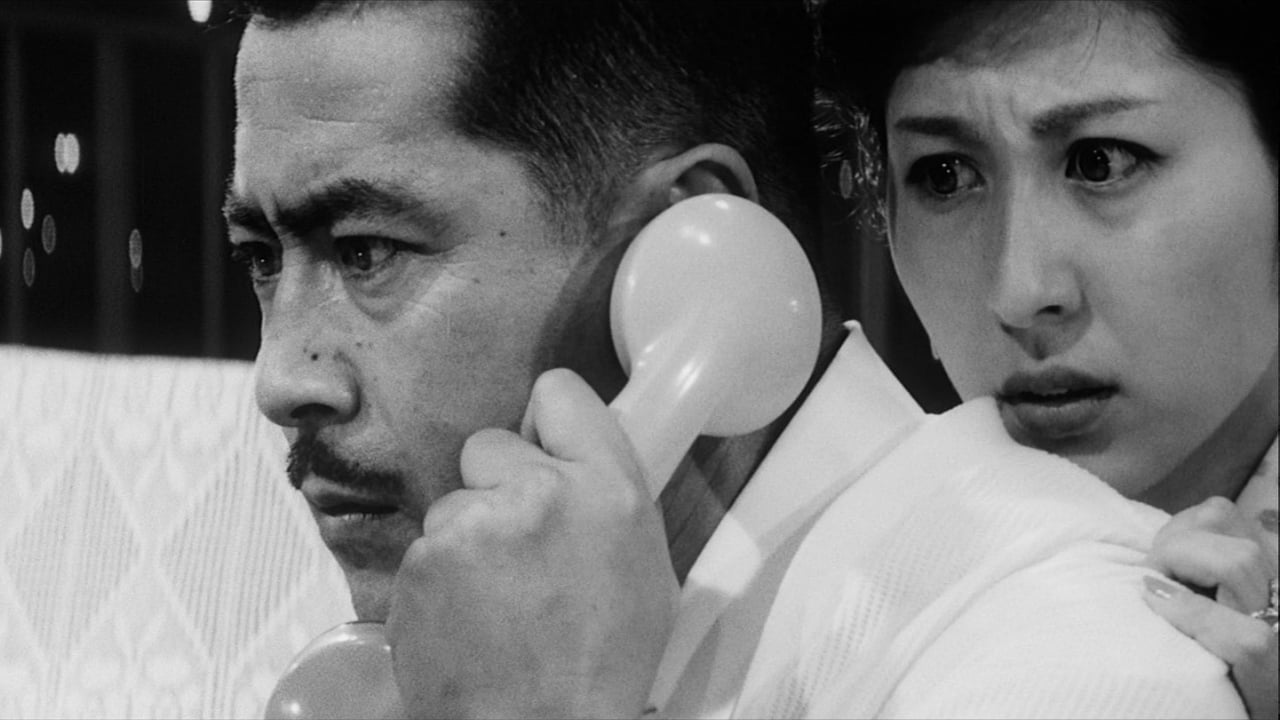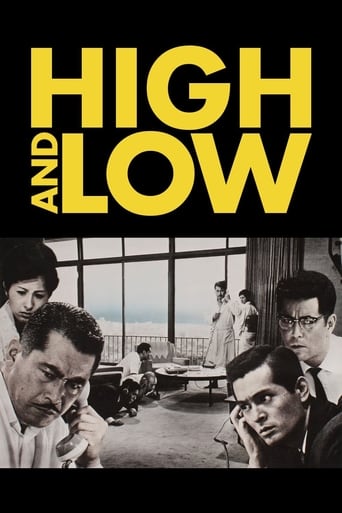

HIGH AND LOW is one of the excellent contemporary thrillers that Akira Kurosawa made during the peak of his career. Unfortunately it's a sub-genre that seems mostly forgotten about today, passed over in favour of Kurosawa's well-renowned samurai movies. It's a shame because these films often have just as much to offer.HIGH AND LOW tells a detailed, lengthy story about a kidnapping and subsequent police investigation. It's a long and slow-moving film but one which rewards close submersion into the storyline and narrative. Toshiro Mifune is cast against type playing a hard-headed shoe factory boss whose son is kidnapped for ransom. However, the kidnapper gets his kids mixed up and accidentally kidnaps the chauffeur's son instead.What follows is tense, well-shot and superbly acted, as are the majority of the director's films. Mifune gives a bullishly realistic turn as the proud factory boss but it's Tatsuya Nakadai who really shines as the smooth detective brought in to solve the case. Watch out for Kurosawa regular Takashi Shimura in the minor role of the police chief. Essentially HIGH AND LOW is a film in two parts, and the original Japanese title - HEAVEN AND HELL - gives some idea of Kurosawa's thematic ideas. Watching these characters descend into a literal and figurative Hell makes for unmissable cinema.
... View MoreI have long been convinced that the best film adaptations are when filmmakers take pulpy works--The Godfather, Jaws, etc.--and invest them with greater meaning. Exhibit A could certainly be this Kurosawa classic, based on Ed McBain's "King's Ransom", which takes a rather straightforward police procedural and transforms it into a powerful examination of moral culpability and the toxic effects of poverty. What I like most about this film--besides the gorgeous wide-angle compositions--is the deliberateness of it; Kurasowa never rushes as he follows the police tracking their quarry, a refreshing change of pace from the frenetic quality of so many movies today.
... View More"High and Low" is a Japanese hostage police drama that follows Kingo Gondo (Toshiro Mifune), the executive of a successful shoe manufacturer who is extorted for 30 million yen when the son of his chauffeur is kidnapped and held for ransom - the only problem is that he can't risk losing the money, otherwise he'll slump into debt, having put all his possession up for collateral in order to buy the majority of shares and maintain order in his company.The movie is over two hours long, split into two parts and is masterfully directed by Kurosawa, using deep focus photography, multiple camera setups, long takes (the longest being 9 minutes and 50 seconds) and his skillful blocking of the actors to get the most out of their performances.The first 50 or so minutes take place inside Gondo's house, the kidnapper on the phone making demands and the police trying to reason with him. Toshiro Mifune has a difficult choice to make and you can really see why he's one of the great actors in film with these scenes - his facial expressions and body language tell you everything about his internal struggle to choose between the safety of his employee's son, or the well being of his family.The movie's then followed by a brilliant train sequence that was done in two takes, had eight cameras filming at once and a hundred extras on board! Kurosawa definitely knew how to stage a scene to make the most out of his resources cinematically.The final part is a police procedural, with every finite detail being included in the large scale investigation. Just like the rest o the movie, it's all very exciting and expertly crafted."High and Low" is one of Akira Kurosawa's best films and one of the best movies ever made, crime flick or otherwise.
... View MoreFrom start to finish, let me assure all of you, there is not one moment that is not engrossing for a true movie viewer. Akiro Kurosawa always does what he does best and this is no exception. Let me take you through the plot without getting into any spoilers.The first half or so shows us the high of the movie where emotions of a group of people inside a household takes turmoils. Our protagonist specially, his wife, more importantly his driver and of course the right hand man. How naturally those "meticulously to the point", emotions pour out is the master's work. He on the other hand is extremely well complimented by the actors. This first part to me in incomparable to any like movie situation I have seen earlier. In here we are shown that a top business man at that exact point of his high business life where he can control all, is informed that his child has been kidnapped. The kidnapper asks for an unimaginable sum of money. This unimaginable sum is the key to his future business success. The twist is, the kidnapper made a mistake and took the child's look alike friend, the driver's son instead. And thus starts a drama so well conceded, words, will be not enough to describe. I cannot say any more without taking away any thrill you may get when seeing this, so.... See for yourself.The low is the second part. This period can be best described as a thorough police work to catch the criminal ever documented onto a movie screen. Nothing is dramatic here, just routine, yet awe- inspiring. I found out the low was the longer period of the movie but was unable to find which is the better of the two.In the end it all comes down to haves and haves not, as seen through the eyes of a common man. Yet, the question is, did the common man do what was required, to get to the category of the haves. You can answer that once you have seen this ....The newcomers here like Tsutomu Yamazaki had a flowering career ahead after this. Tatsuya Nakadai, the perfect actor, did perfectly, the job of chief police investigator and planner. Nothing is required to be said about Toshirô Mifune. 10/10 is my verdict.
... View More